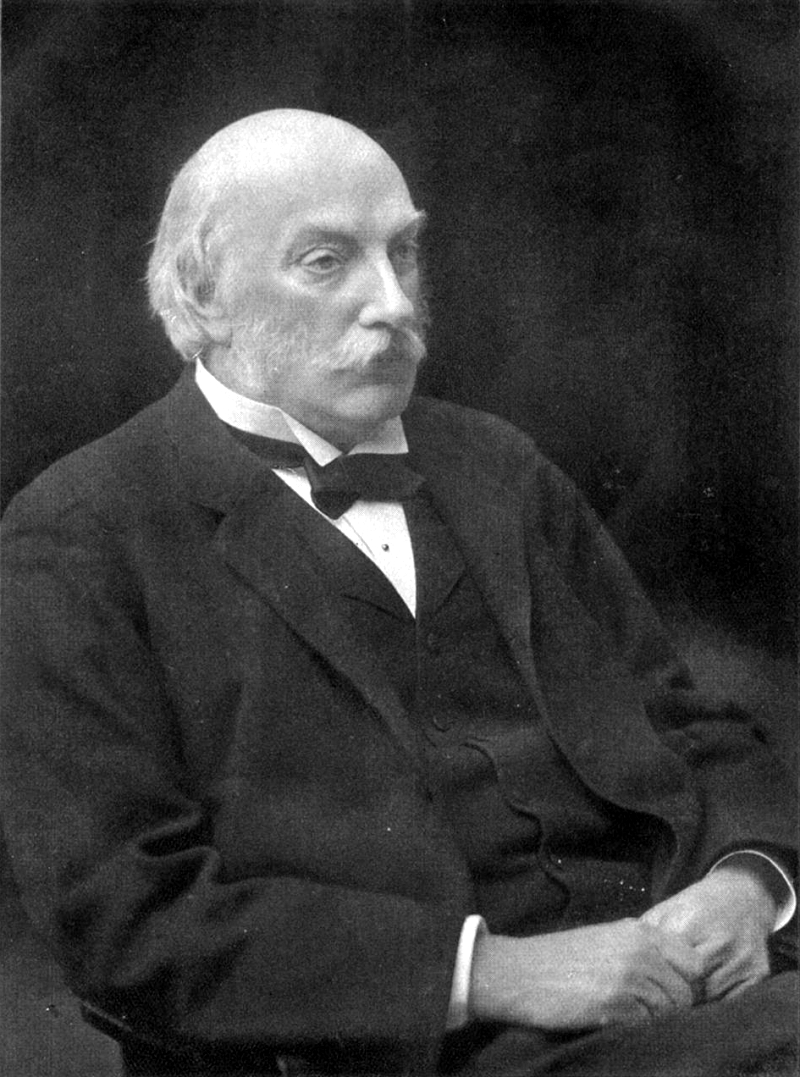
John William Strutt, 3rd Baron Rayleigh
John William Strutt, 3rd Baron Rayleigh, OM, PC, FRS (/ˈreɪli/; 12 November 1842 – 30 June 1919) was a British mathematician and physicist who made extensive contributions to science. He spent all of his academic career at the University of Cambridge. Among many honours, he received the 1904 Nobel Prize in Physics "for his investigations of the densities of the most important gases and for his discovery of argon in connection with these studies." He served as president of the Royal Society from 1905 to 1908 and as chancellor of the University of Cambridge from 1908 to 1919.
The Lord Rayleigh
12 November 1842
30 June 1919 (aged 76)
British
- Discovery of argon
- Plateau–Rayleigh instability
- Rayleigh waves
- Rayleigh scattering
- Rayleigh criterion
- Rayleigh distance
- Rayleigh–Bénard convection
- Rayleigh–Brace experiments
- Rayleigh–Faber–Krahn inequality
- Rayleigh's criterion
- Rayleigh's criterion (thermoacoustics)
- Rayleigh distribution
- Rayleigh interferometer
- Rayleigh's method of dimensional analysis
- Rayleigh–Ritz method
- Rayleigh quotient
- Rayleigh–Lorentz pendulum
- Rayleigh–Gans approximation
- Rayleigh dissipation function
- Rayleigh fading
- Rayleigh flow
- Rayleigh's formulas
- Rayleigh fractionation
- Rayleigh law
- Rayleigh number
- Rayleigh problem
- Rayleigh–Carson reciprocity
- Rayleigh–Plesset equation
- Rayleigh–Schrödinger perturbation theory
- Rayleigh Still
- Rayleigh–Taylor instability
- Rayleigh–Jeans catastrophe
- Rayleigh–Jeans law
- Rayleigh's equation
- Rayleigh's solution
- Janzen–Rayleigh expansion
- Rayleigh limit
- Rayleigh test
- Rayleigh theorem for eigenvalues
- Rayleigh's energy theorem
- Rayleigh's theorem
- Acoustic streaming
- Anti-reflective coating
- Bending theory
- End correction
- Drag equation
- Dynamic soaring
- Duplex theory
- Optical theorem
- Photonic crystal
- Principle of similitude
- Self-oscillation
- Ultrasound scattering
- Sound theory
- Waveguide
- Whispering-gallery wave
3 sons
- 1865 Smith's Prize
- 1882 Royal Medal
- 1890 De Morgan Medal
- 1894 Matteucci Medal
- 1895 Barnard Medal for Meritorious Service to Science
- 1895 Faraday Lectureship Prize
- 1899 Copley Medal
- 1904 Nobel Prize in Physics
- 1905 Albert Medal
- 1913 Elliott Cresson Medal
- 1914 Rumford Medal
Rayleigh provided the first theoretical treatment of the elastic scattering of light by particles much smaller than the light's wavelength, a phenomenon now known as "Rayleigh scattering", which notably explains why the sky is blue. He studied and described transverse surface waves in solids, now known as "Rayleigh waves". He contributed extensively to fluid dynamics, with concepts such as the Rayleigh number (a dimensionless number associated with natural convection), Rayleigh flow, the Rayleigh–Taylor instability, and Rayleigh's criterion for the stability of Taylor–Couette flow. He also formulated the circulation theory of aerodynamic lift. In optics, Rayleigh proposed a well-known criterion for angular resolution. His derivation of the Rayleigh–Jeans law for classical black-body radiation later played an important role in the birth of quantum mechanics (see ultraviolet catastrophe). Rayleigh's textbook The Theory of Sound (1877) is still used today by acousticians and engineers. He introduced the Rayleigh test for circular non-uniformity, of which the Rayleigh plot visualizes.
The lunar crater Rayleigh as well as the Martian crater Rayleigh were named in his honour.[22][23] The asteroid 22740 Rayleigh was named after him on 1 June 2007.[24] A type of surface waves are known as Rayleigh waves, and the elastic scattering of electromagnetic waves is called Rayleigh scattering. The rayl, a unit of specific acoustic impedance, is also named for him. Rayleigh was also awarded with (in chronological order):
Lord Rayleigh was among the original recipients of the Order of Merit (OM) in the 1902 Coronation Honours list published on 26 June 1902,[25] and received the order from King Edward VII at Buckingham Palace on 8 August 1902.[26][27]
He received the degree of Doctor mathematicae (honoris causa) from the Royal Frederick University on 6 September 1902, when they celebrated the centennial of the birth of mathematician Niels Henrik Abel.[28][29]
Sir William Ramsay, his co-worker in the investigation to discover argon described Rayleigh as "the greatest man alive" while speaking to Lady Ramsay during his last illness.[30]
H. M. Hyndman said of Rayleigh that "no man ever showed less consciousness of great genius".[30]